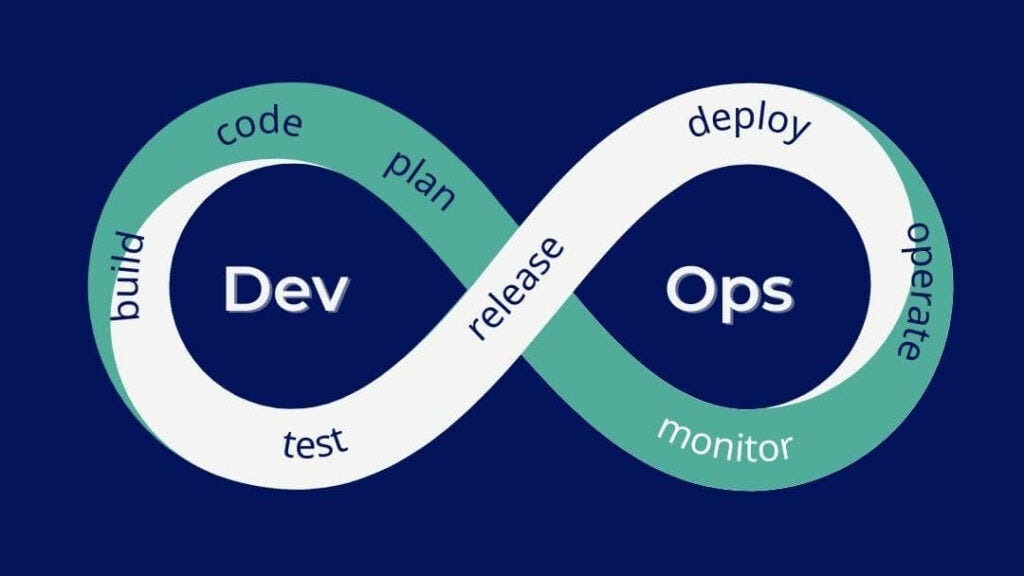
In the past, software development and operations often worked in silos; developers wrote code, then handed it off to operations, hoping it would run without issues.
When problems arose, operations scrambled to fix them, often without context, leading to frustration, delays, and plenty of late nights.
DevOps emerged not as a quick fix, but as a cultural shift and set of practices designed to bridge this gap. DevOps transforms how teams work together by fostering communication, shared responsibility, and mutual understanding.
Instead of a handoff, it becomes a partnership, where both sides collaborate from start to finish, ensuring smoother deployments, faster problem-solving, and ultimately, better software for users.
1. A Shared Sense of Ownership
Developers aren’t just responsible for building features; they also care about how those features behave in production.
With DevOps in place, operations teams aren’t just “keeping the lights on”; they have a say in design and deployment decisions.
The old “us vs. them” wall crumbles when everyone feels accountable for the same result. This doesn’t mean disagreements vanish far from it. But instead of being battles, disagreements become problem-solving sessions.
2. Clear and Consistent Communication
DevOps encourages regular, structured communication that cuts through confusion.
For example:
- Daily stand-ups where both dev and ops are present
- Shared chat channels for quick problem-solving
- Joint planning sessions before releases
If you’ve ever been on a team where messages get lost in email threads or important updates are buried in a ticket description, you know the pain of unclear communication.
In a DevOps culture, the habit of talking frequently and using the same language means fewer nasty surprises later. This applies to any relationship: friendships, partnerships, or casual group projects.
The moment communication dries up, misunderstandings multiply. Software teams are no different.
3. Faster Feedback Loops
In traditional setups, feedback could take days, weeks, or even months to reach the developers from production.
By then, the problem might have grown, the context lost, and the motivation to fix it buried under new priorities.
DevOps shortens that loop. Continuous integration and delivery tools allow quick testing, automated alerts, and real-time monitoring.
Developers see almost immediately if a change broke something. This saves time and encourages experimental and sometimes creative solutions because teams can fail fast and recover quickly.
4. Collaboration Through Automation
Automation isn’t just about saving keystrokes; it’s about removing team friction.
- Automated testing reduces the blame game over who missed a bug.
- Infrastructure as code lets dev and ops see exactly how systems are set up.
- Continuous deployment pipelines make releases predictable instead of stressful.
When repetitive tasks are automated, people have more energy for meaningful work.
Nobody bonds over manually updating 15 servers at midnight, but they might bond over solving a scaling issue together the next morning. Automation shifts the focus from repetitive firefighting to creative problem-solving.
5. Transparency in Processes
DevOps thrives on visibility. Everyone can see what’s being worked on, what’s stuck, and what’s going live. Tools like dashboards and shared repositories mean there’s no mystery about progress or problems.
Transparency also builds trust. If operations can see the release plan well in advance, they can prepare the infrastructure.
Developers can make informed coding decisions if they can see real-time system performance. It’s like driving a car: You’d never want the speedometer covered up and just hope you’re not speeding.
6. Continuous Learning and Improvement
Collaboration isn’t just about the present; it’s about learning together for the future.
- Post-incident reviews focus on root causes, not finger-pointing.
- Regular retrospectives allow both sides to share what worked and what didn’t.
- Cross-training helps team members understand each other’s challenges.
Some of the best collaborations happen outside the core workflow. A developer shadowing an ops engineer for a day might learn more than in weeks of formal documentation reading.
Similarly, when ops staff join in code review sessions, they spot potential operational headaches early. These moments of learning become the glue that holds the team together.
7. A Culture of Respect
At the heart of DevOps is respect for each other’s skills, time, and perspective. Developers recognize that keeping systems stable is a complex job, and operations teams appreciate that writing clean, efficient code isn’t easy. This mutual respect often leads to more patient conversations, more curiosity about the other side’s work, and fewer dismissive comments like “That’s not my problem.”
In many ways, DevOps reminds us that collaboration isn’t just a process; it’s a relationship. And like any good relationship, it’s built on trust, shared goals, and the occasional willingness to meet halfway.
Wrapping Up
DevOps isn’t about eliminating differences between development and operations; those differences are valuable. Instead, it’s about creating a shared space where those differences work together toward the same outcome.
Through shared ownership, clear communication, faster feedback, automation, transparency, learning, and respect, DevOps helps teams work better and enjoy working together.
The funny thing is, once teams embrace DevOps, the term itself fades into the background. It just becomes “how we work.” And that’s when you know collaboration has truly taken root.